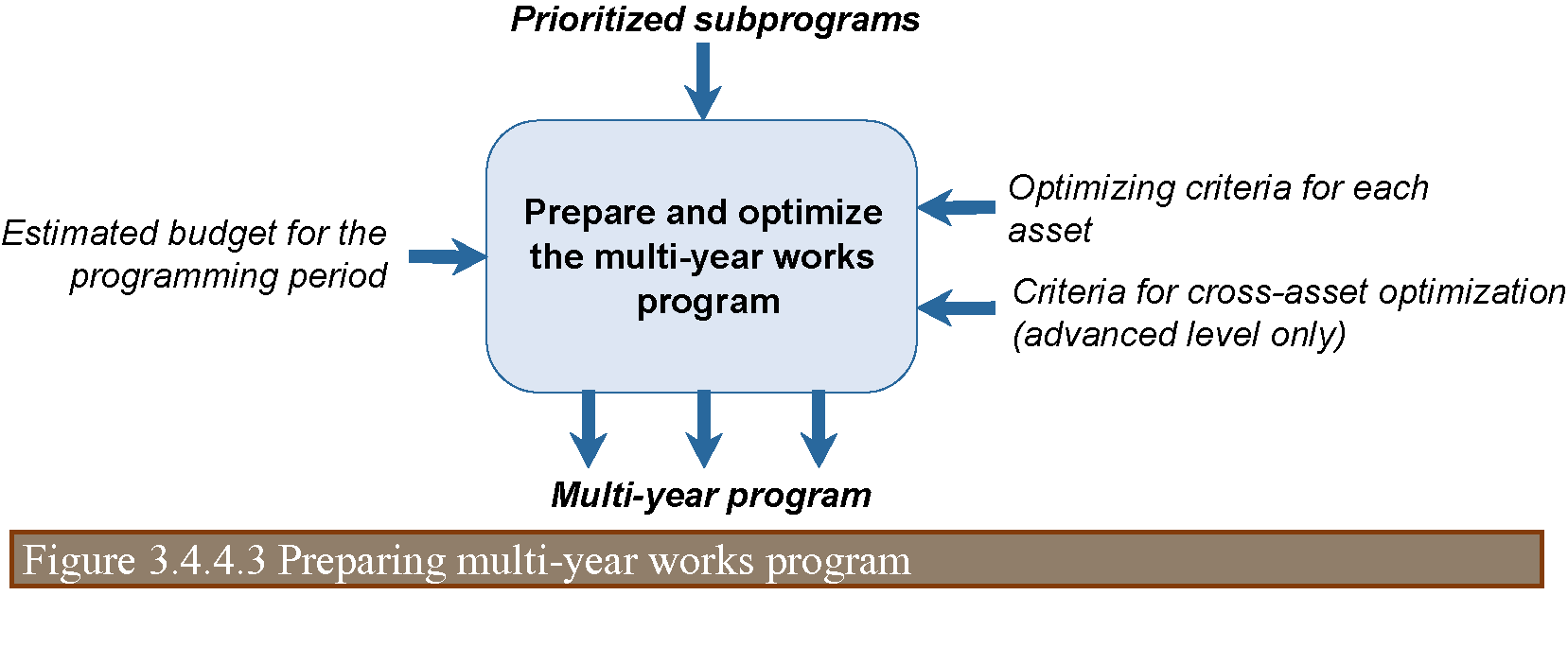
Asset Management Manual
A guide for practitioners!

Asset Management Manual
A guide for practitioners!
Multi-year programs comprise projects for the various asset classes to be executed within periods from three to five years (UKRLG and HMEP 2013). When information is available, programs can be developed for longer periods, e.g., 10 or more years. The preparation of multi-year programs is an essential phase of the programming process where project-level needs are reconciled with network-level resource constraints and performance goals.
The multi-year program supports financial planning by demonstrating what projects needs to be done and where and when they are to be undertaken. This planning must be reviewed annually and updated using the latest information available.
A multi-year program should indicate the amounts of funding corresponding to routine, preventive, and periodic maintenance, as well as resources intended for rehabilitation and construction (Austroads 2009). It should also contain details of the specific works considered for budget allocation. These features may be challenged by senior decision makers, so multi-year programs need to be robust and based on reliable information.
The list of projects to be included in the multi-year program is compiled by selecting projects from the prioritized program and adding up the costs estimated for each project until the forecasted budget is exhausted. At the advanced maturity level, the asset management plan and the investment strategy serve as a basis for determining which projects should be selected.
For projects around the budget ceiling or those requiring significant investment, additional data may be required to verify any assumptions made. The actual benefits from obtaining these data should be carefully assessed when the costs and risks involved are significant (UKRLG and HMEP 2013).
Project selection from prioritized programs often involves an optimization process. In this context, optimization refers to selecting investment options from various alternatives with the aim of achieving the highest benefits from constrained resource levels (Austroads 2009). One of the ranking criteria used for optimizing the available budget is the incremental benefit-cost ratio, which seeks to maximize the economic benefits for each additional unit of expenditure (Morosiuk et al. 2006).
Various management systems provide optimization modules for conducting impact analyses of different funding scenarios (Austroads 2009). Scenarios that might be considered include current constrained funds, incremented funds, reduced funds, and changes in the level of service offered. Results can then be presented to senior management to either support a particular funding scenario or examine various scenario options.
In performing program optimization, considerations such as the following may also be addressed (UKRLG and HMEP 2013):
Optimization of works programs has been traditionally carried out separately for the various asset classes, with a different budget ceiling established for each class. Using this approach, the resulting multi-annual program is actually made up of as many subprograms as the number of asset classes included in the programming process. Organizations at the advanced maturity level of asset management consider the implementation of methods for optimizing resource allocation across asset classes, using optimization processes based on a multi-criteria approach similar to that described for the prioritization stage.
Figure 3.4.4.3 shows the main information flows occurring at this stage of the programming process.

As mentioned above, organizations at the basic level only support development of annual works programs. In this case, the preparation and optimization of the multi-annual program is omitted or, more precisely, the tasks described above are performed using an analysis period of one year, and cross-asset optimization is not addressed.